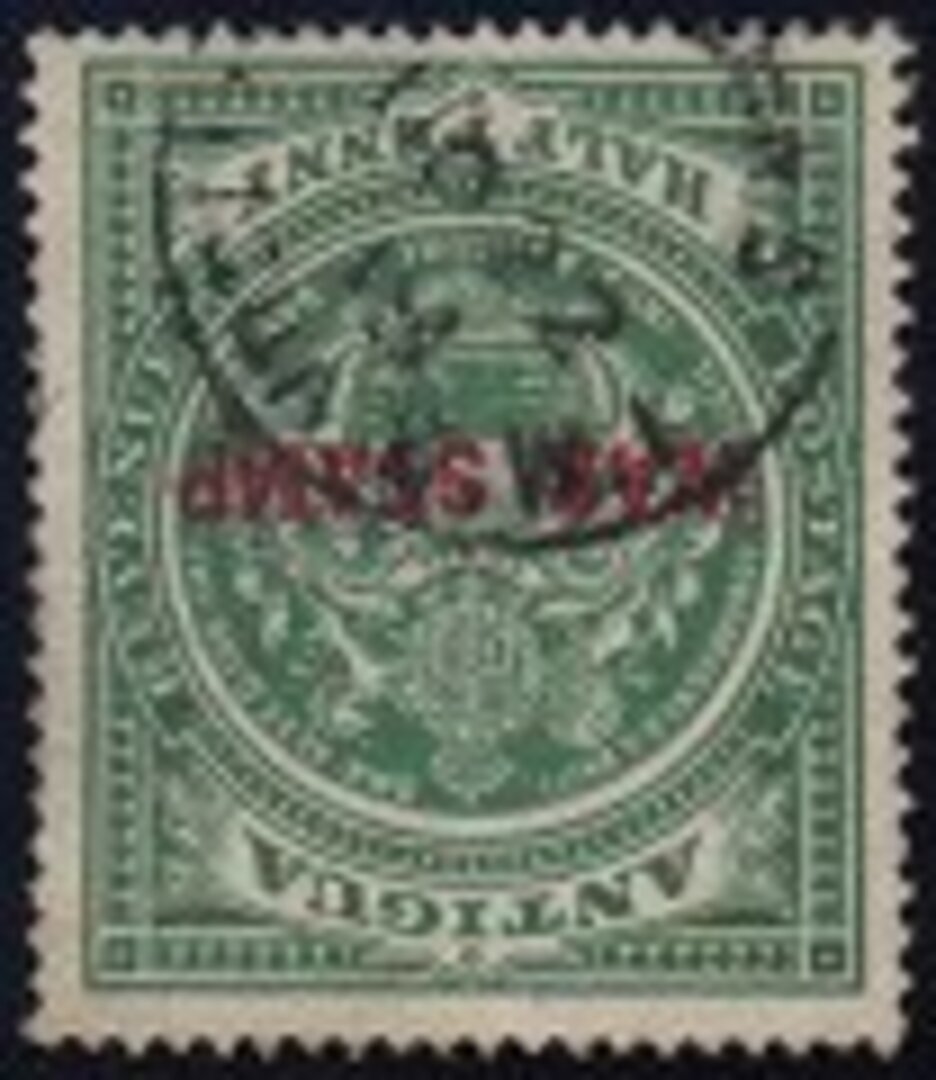A popular tax!?
New discoveries in British Colonial philately are rare so we are excited to offer, for the first time anywhere, an example of the Antigua 1916-17 ½d green overprinted “War Tax” in red, with a previously unrecorded watermark inverted. It serves as a useful platform from which to describe the origins and history of “War Tax” stamps and demonstrate why this is such an interesting and collectible area to study.
Wars are as unpopular as taxation. They also cost vast amounts of money. The British and Dominion Governments recognised that one of the easiest and foolproof methods of applying a tax for the war effort was to use an existing resource. As the revolution in postal communication continued to gather momentum it was evident by the early 20th century that a reliable source was readily available.
Stamps To Aid The War Effort
What better way of generating revenue than to introduce a mandatory surcharge or tax to attach to an existing service, one that was likely to be more efficient than traditional methods involving War Bonds or simply borrowing money in the form of loans? The method chosen was simple. Users paid standard postal charges but were additionally required to affix a “War Tax Stamp” of a similar value to all correspondence. If ignored, the recipient was required to pay the War Tax as a “Postage Due”.
These regular stamps carried overprints, using both red and black inks, with headings that include “WAR”, “WAR STAMP” and “WAR TAX” in some cases the value was also shown. Such overprints were sometimes applied in England before despatch or otherwise by the local Colonial postal service upon receipt. One feature of this is that there are variations in lettering style, often random positioning, double applications and inverted overprints.
Taxation is generally unpopular and notoriously difficult to collect. Legal sanctions are almost always required to enforce payment. So what was the position of the “War Tax Stamps”? As a means of raising revenue their need was recognised and well received by a patriotic general public. At the time, many believed them to have been a British innovation, intended to help finance the mobilisation and provide the equipment and arms needed by British and Empire troops fighting in Europe. In fact it was Spain that produced the first “War Tax Stamps” between 1874 and 1879.
Spanish American War Stamps
They were issued to help finance the costs of the Third Carlist War, overprinted “Impuesto de Guerra” or “Impto de Guerra”. Spain subsequently issued further stamps between 1897 and 1898 to help fund The Cuban War of Independence and the Spanish-American War.
This relatively simple philatelic mechanism, as popular as any tax could be, achieved what was intended and contributed to the overall war effort by providing revenue necessary to pay for the escalating costs of the First World War. Canada passed a ‘Special War Revenue Act’ in February 1915 and became the first country to produce the stamps. Rather than overprint regular stamps Canada chose to modify the dies used in the printing of their George V stamps to read “WAR TAX”. Later examples added “1T¢” to the 2 cent face value to show that a one cent tax had been paid.
New Zealand followed Canada in September 1915 and by the end of hostilities twenty eight other Colonies and Dominions had also issued “War Tax Stamps”, although at least seven did not, including Cyprus, Hong Kong, Nigeria and Sierra Leone. Portugal entered the war in 1916 and produced stamps with overprints bearing the words “TAXA DE GUERRA” that were later duplicated by the Portuguese Colonies.
The Second World War did not see a repeat, a few countries including North Borneo produced something similar but this particular method of raising war funds was never applied on the same scale as seen between 1914 -1920.
Below is an example of one of the rarest and most sought-after examples of an Antiguan War Tax stamp and links to bidding pages.

 General
General
 General
General
 General
General